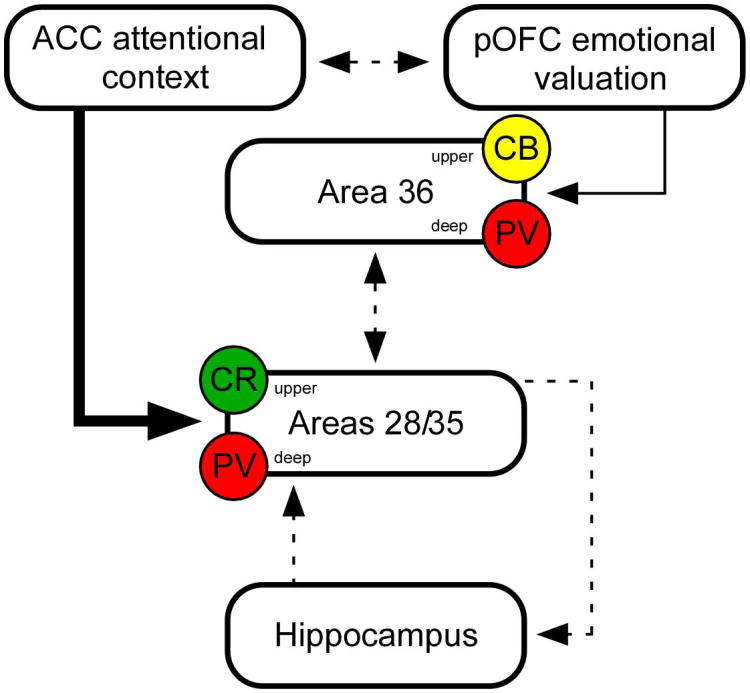Figure 8.
Summary of the presynaptic and the subset of inhibitory postsynaptic characteristics of the ACC and pOFC pathways to areas 28, 35 and 36 of the rhinal cortices. Both pathways innervate mostly excitatory neurons (not shown) as well as a significant proportion of distinct neurochemical classes of inhibitory neurons, as shown here. Dotted lines show known circuits from other studies. The size of lines and arrows from ACC and pOFC reflects the size of synapses. ACC signals, via a greater proportion of large and synaptically efficient boutons on excitatory neurons (not shown) also impinge on CR (green) inhibitory neurons in the upper layers of areas 28 and 35 where they are positioned to disinhibit the neurons which originate the principal cortical input to the hippocampus. ACC signals arriving in the deep layers target PV (red) inhibitory neurons that may modulate hippocampal output to allow transfer of signals from the deep layers to other cortices or to re-enter the cortico-hippocampal loop via ascending projections to area 28. Signals from the pOFC target CB (yellow) inhibitory neurons in the upper layers of area 36 which may modulate the integration of sensory valuation signals, and project to areas 28 and 35. Similar to the ACC pathway to rhinal deep layers, pOFC projections to the deep layers of area 36, target PV neurons where they may enhance inhibition in the cortical circuit leading to other cortices.

